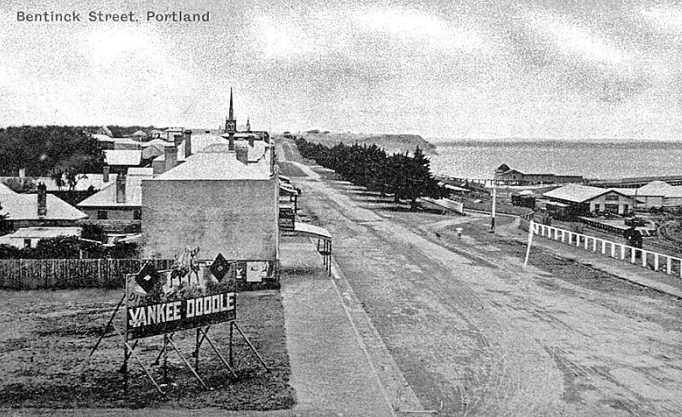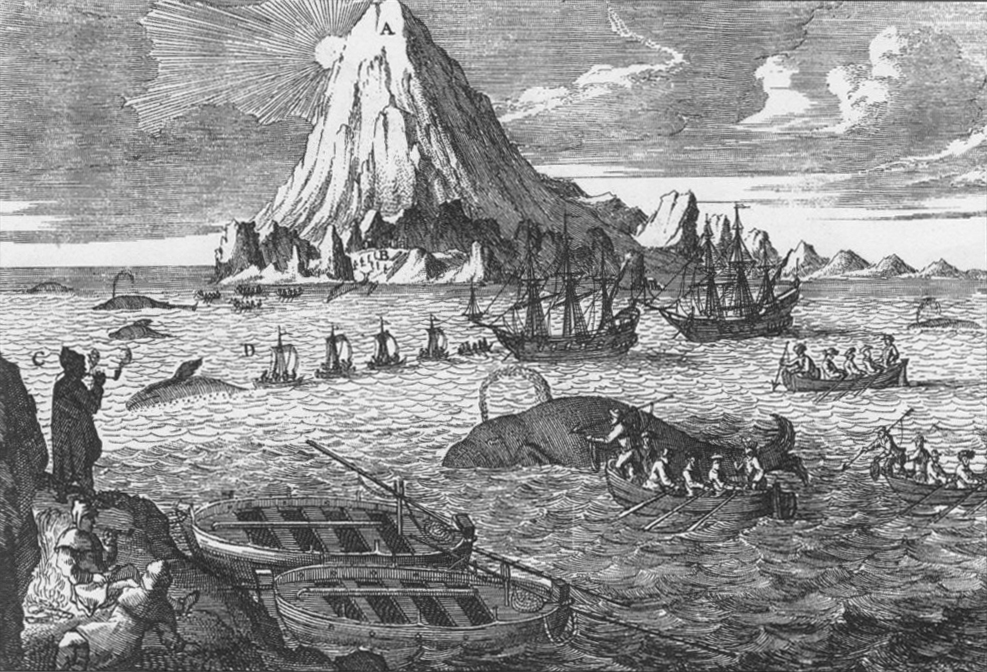|
Portland Bay
Portland Bay ( Dhauwurdwurrung: ''Kardermudelar / Pathowwererer'') is a small bay off the coast of Victoria, Australia. It is about west of Melbourne. The city of Portland is located on the bay. The western end of the bay is marked by the headland of Point Danger. The bay was named after the Duke of Portland, a Secretary of State and later Prime Minister of Great Britain, by Lieutenant James Grant sailing on the ''Lady Nelson'', on 7 December 1800. The town of Portland later took its name from the bay. References Bays of Victoria (state) Portland, Victoria Whaling stations in Australia William Cavendish-Bentinck, 3rd Duke of Portland {{BarwonSouthWest-geo-stub ... [...More Info...] [...Related Items...] OR: [Wikipedia] [Google] [Baidu] |
Victoria (state)
Victoria, commonly abbreviated as Vic, is a States and territories of Australia, state in southeastern Australia. It is the second-smallest state (after Tasmania), with a land area of ; the second-most-populated state (after New South Wales), with a population of over 7 million; and the most densely populated state in Australia (30.6 per km2). Victoria's economy is the List of Australian states and territories by gross state product, second-largest among Australian states and is highly diversified, with service sectors predominating. Victoria is bordered by New South Wales to the north and South Australia to the west and is bounded by the Bass Strait to the south (with the exception of a small land border with Tasmania located along Boundary Islet), the Southern Ocean to the southwest, and the Tasman Sea (a marginal sea of the South Pacific Ocean) to the southeast. The state encompasses a range of climates and geographical features from its temperate climate, temperate coa ... [...More Info...] [...Related Items...] OR: [Wikipedia] [Google] [Baidu] |
Portland, Victoria
Portland ( ) is a city in Victoria (Australia), Victoria, Australia, and is the oldest European settlement in the state. It is also the main urban centre in the Shire of Glenelg and is located on Portland Bay. As of the 2021 Australian census, 2021 census the population was 10,016, increasing from a population of 9,712 taken at the 2016 Australian census, 2016 census. History Early history The Gunditjmara, an Aboriginal Australian people, are the traditional owners of much of south-west Victoria, including what is now Portland, having lived there for thousands of years. They are today renowned for their early aquaculture development at nearby Lake Condah. Physical remains such as the weirs and fish traps are to be found in the Budj Bim heritage areas. The Gunditjmara were a settled people, living in small circular weather-proof stone huts about high, grouped as villages, often around short-finned eel, eel traps and aquaculture ponds. On just one hectare of Allambie Farm, archaeol ... [...More Info...] [...Related Items...] OR: [Wikipedia] [Google] [Baidu] |
Point Danger (Portland)
Point Danger is a headland on the coast of south-western Victoria (Australia), Victoria, Australia. It lies at the western end of Portland Bay, on the northern side of Bass Strait, about 6 km south-south-east of the city of Portland, Victoria, Portland. Cape Nelson State Park, Cape Nelson lies 2.5 km to the south-west and the Lawrence Rocks 2 km to the south-east. Gannet colony Point Danger is home to a colony of Australasian gannets, largely a result of spillover from the nearby Lawrence Rocks colony exceeding its capacity. Established in October 1996, it is Australia's only mainland gannet colony; all others are on islands. However, in the first year of its existence no chicks were produced because of human disturbance and predation by foxes and feral cats. The gannets have subsequently been protected both by limiting public access to a viewing site overlooking the colony and by the presence of two Maremma Sheepdogs to deter predators. Colony size has grown ... [...More Info...] [...Related Items...] OR: [Wikipedia] [Google] [Baidu] |
William Cavendish-Bentinck, 3rd Duke Of Portland
William Henry Cavendish Cavendish-Bentinck, 3rd Duke of Portland (14 April 173830 October 1809) was a British Whigs (British political party), Whig and then a Tories (British political party), Tory politician during the late Georgian era. He served as List of chancellors of the University of Oxford, chancellor of the University of Oxford (1792–1809) and as Prime Minister of Kingdom of Great Britain, Great Britain (1783) and then of the Prime Minister of the United Kingdom, United Kingdom (1807–1809). The gap of 26 years between his two terms as prime minister is the longest list of Prime Ministers of the United Kingdom by tenure, of any British prime minister. He is also an ancestor of King Charles III through his great-granddaughter Cecilia Bowes-Lyon, Countess of Strathmore and Kinghorne. Portland was known before 1762 by the courtesy title Marquess of Titchfield. He held a title for every degree of British nobility: duke, marquess, earl (Earl of Portland), viscount (Visc ... [...More Info...] [...Related Items...] OR: [Wikipedia] [Google] [Baidu] |
James Grant (navigator)
James Grant (1772 – 11 November 1833) was a Scottish born British Royal Navy officer and navigator in the early nineteenth century. He served in Australia in 1800–1801 and was the first to map the Bass Strait between mainland Australia and Tasmania. Early life Grant was baptized on 6 September 1772 at Forres, Morayshire, Scotland. He was educated at King's College, Aberdeen, under Dr. William Chalmers. He entered the Royal Navy as a captain's servant in August 1793 and was appointed a midshipman in May 1794. He passed his board for promotion to lieutenant and was promoted in 1800. Voyages of exploration Thanks to his friendship with Captain John Schank, as a lieutenant he took command of , a new vessel of 60 tons fitted with a centre-board (or "Schank") keel, towards the end of 1799 he sailed from the River Thames for Port Jackson on 18 March 1800. A brig of 60 tons, she carried a crew comprising the commanding officer, two mates and twelve seamen. His instructions were to ... [...More Info...] [...Related Items...] OR: [Wikipedia] [Google] [Baidu] |
Bays Of Victoria (state)
A bay is a recessed, coastal body of water that directly connects to a larger main body of water, such as an ocean, a lake, or another bay. A large bay is usually called a ''gulf'', ''sea'', ''sound'', or ''bight''. A ''cove'' is a small, circular bay with a narrow entrance. A ''fjord'' is an elongated bay formed by glacial action. The term ''embayment'' is also used for , such as extinct bays or freshwater environments. A bay can be the estuary of a river, such as the Chesapeake Bay, an estuary of the Susquehanna River. Bays may also be nested within each other; for example, James Bay is an arm of Hudson Bay in northeastern Canada. Some large bays, such as the Bay of Bengal and Hudson Bay, have varied marine geology. The land surrounding a bay often reduces the strength of winds and blocks waves. Bays may have as wide a variety of shoreline characteristics as other shorelines. In some cases, bays have beaches, which "are usually characterized by a steep upper foreshore wit ... [...More Info...] [...Related Items...] OR: [Wikipedia] [Google] [Baidu] |
Whaling Stations In Australia
Whaling is the hunting of whales for their products such as meat and blubber, which can be turned into a type of oil that was important in the Industrial Revolution. Whaling was practiced as an organized industry as early as 875 AD. By the 16th century, it had become the principal industry in the Basque coastal regions of Spain and France. The whaling industry spread throughout the world and became very profitable in terms of trade and resources. Some regions of the world's oceans, along the animals' migration routes, had a particularly dense whale population and became targets for large concentrations of whaling ships, and the industry continued to grow well into the 20th century. The depletion of some whale species to near extinction led to the banning of whaling in many countries by 1969 and to an international cessation of whaling as an industry in the late 1980s. Archaeological evidence suggests the earliest known forms of whaling date to at least 3000 BC, practiced by the ... [...More Info...] [...Related Items...] OR: [Wikipedia] [Google] [Baidu] |





